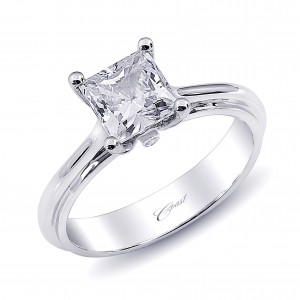Diamond Cutting: How Does It Work? (Part Two)

In our last post on diamond cutting, we left off after the cleaving step. Today, we will pick up just after that.
When we talked about cleaving, we talked about making the cut along a weak point in the diamond known as the tetrahedral plane. If a weak point cannot be found, the cutter may have to resort to sawing. For sawing, a phosphor-bronze blade is typically used. This blade rotates at 15,000 revolutions per minute. Alternatively, the cutter may use a laser, although this is a time-consuming technique.
When performing the cut, the cutter decides where the table, or the flat top of the cut stone, and the girdle, or the widest point, will be.
Next, we arrive at the step referred to as cutting. This is when the final shape of the diamond is revealed. If the cutting is performed by hand, rather than machine, it is referred to as bruiting. When cutting by machine the rough diamond is placed in a lathe, and another diamond is used to rub against it, giving it shape. Once the diamond has been cut and its shape has been drawn out, it is time for it to be polished.
Polishing is done using a wheel coated with a rough, abrasive diamond powder. Finally, once polishing is finished, we have a result that looks something like one of the brilliant diamonds you will find at Stewart Kuper Jewelers.


